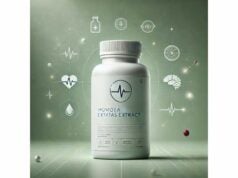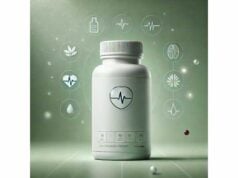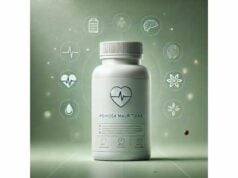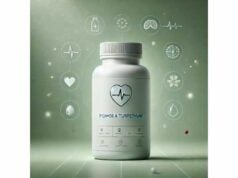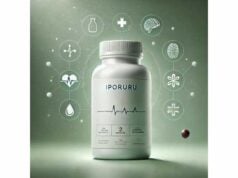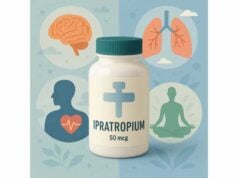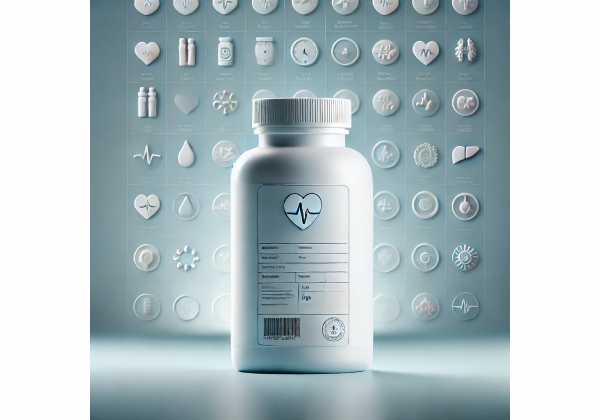
Irwinol is a cosmetic-grade botanical butter derived from the kernels of the African bush mango (Irvingia gabonensis). Unlike ingestible “African mango” supplements, Irwinol is formulated for topical care—especially lips, face, and dry or damaged hair. It is rich in saturated triglycerides dominated by lauric (C12:0) and myristic (C14:0) fatty acids, which melt near skin temperature and form a breathable, protective film. That occlusive-yet-light texture helps reduce transepidermal water loss, soften rough patches, and enhance glide in balms, butters, and conditioners. Because it is cultivable and food-derived, Irwinol appeals to brands seeking plant-origin emollients that are stable, sustainable, and sensorially pleasant. This guide breaks down what Irwinol is, how it works on skin and hair, realistic benefits, sensible use levels in formulas, safety notes, and how to choose high-quality products that use it well.
Fast Facts
- Softens very dry skin and lips by forming a light, protective film that reduces water loss.
- Typical use levels: 1–5% in creams and lotions; 3–10% in balms and butters; 1–3% in hair masks and conditioners.
- Generally well tolerated; avoid if you have a known allergy to mango-family (Anacardiaceae) ingredients or fragrance waxes.
- Not an ingestible supplement; intended for topical application only.
- Pregnant or breastfeeding users can apply topically as with other cosmetic plant oils, but patch test first if you have reactive skin.
Table of Contents
- What is Irwinol?
- Benefits you can realistically expect
- How to use and “dosage” for topical care
- Formulating and choosing quality products
- Safety, side effects, and who should avoid
- What the evidence says about Irwinol
What is Irwinol?
Irwinol is the trade name for a family of cosmetic butters derived from Irvingia gabonensis kernels (sometimes labeled “African bush mango,” “wild mango,” or “dika nut”). In finished products you may see it listed on the INCI as Irvingia Gabonensis Kernel Butter and, depending on the grade, blended with emollients such as Octyldodecanol and Hydrogenated Coco-Glycerides to fine-tune spread and stability. Although mango fruit pulp is widely known, Irwinol specifically comes from the kernel fat of the seed. This fat is unusually high in lauric and myristic acids—shorter-chain saturated fatty acids also found in coconut and babassu oils—giving it a semi-solid, balm-like texture that melts quickly on contact with skin.
Because these triglycerides are solid at room temperature and melt near skin temperature, Irwinol glides on smoothly, fills in micro-fissures on dry lips or elbows, and leaves a soft, cushiony feel. The film is occlusive enough to slow water loss but not so heavy that it feels waxy when used at sensible levels. For hair, the same profile helps reduce friction during combing and adds slip to damaged fiber cuticles.
From a sustainability standpoint, Irwinol leverages a food co-product stream: kernels used for traditional “dika” preparations are also a source of fat suitable for cosmetics. Responsible suppliers standardize the butter, filter particulates, and verify contaminants (heavy metals, peroxides, microbes). The result is a consistent, cosmetic-grade ingredient that formulators can dose predictably across creams, balms, and conditioners.
Key takeaways about identity and composition:
- Source: Irvingia gabonensis kernel fat (not the fruit pulp).
- Dominant fatty acids: Myristic and lauric, with minor palmitic and stearic; very low polyunsaturates.
- Physical behavior: Semi-solid; fast melt; good gloss; stable to oxidation compared with high-PUFA oils.
- Primary role: Emollient/occlusive film-former for lip repair, very dry skin, and combability in hair care.
Benefits you can realistically expect
1) Softer, more comfortable skin and lips within minutes.
The hallmark of Irwinol is its sensory payoff: a fast-melting, silky film that cushions rough texture. On lips and chapped areas, that film helps seal in moisture while reducing tightness. Users often describe immediate comfort and smoother glide of lipsticks layered on top. In leave-on skin care, Irwinol supports short-term barrier protection while other humectants (glycerin, hyaluronic acid) draw water into the stratum corneum.
2) Reduced transepidermal water loss (TEWL).
Occlusive emollients slow the escape of water through the skin. Compared with very fluid oils, hard butters that melt at skin temperature are especially efficient at plugging micro-gaps between corneocytes. Thanks to its saturated, short-to-medium chain profile, Irwinol creates a uniform film with a pleasant, non-greasy afterfeel when used at 1–5% in emulsions and 3–10% in balms.
3) Improved combability and sensory feel on hair.
Damaged or color-treated hair has lifted cuticles that increase friction and snagging. A thin coating of Irwinol on wet or dry hair reduces fiber-to-fiber friction, improving detangling and perceived smoothness. Formulators sometimes blend Irwinol with cationic conditioners to enhance slip and softness without excessive weight.
4) Better stability than many plant oils.
Highly unsaturated oils can oxidize, leading to off-odors and color shifts. Irwinol’s low iodine value reflects a saturated profile that is naturally more oxidation-resistant, extending product shelf life and maintaining a clean sensory profile under normal cosmetic storage.
5) Supportive role in protective and repairing formats.
Irwinol shows its best performance in lip repair sticks, overnight balms, hand creams for very dry skin, and intensive hair masks. It complements humectants and barrier-support ingredients by providing the occlusive “cap” that keeps hydration where it needs to be.
What not to expect:
- It is not an exfoliant, retinoid, or active that triggers collagen synthesis. Benefits are conditioning and protective, not resurfacing.
- It is not medicinal and is not intended to treat skin diseases. For eczema, dermatitis, or severe cheilitis, consult a healthcare professional.
Who notices the biggest improvements?
- People with very dry, flaky, or wind-chapped skin and lips.
- Those living in cold, low-humidity climates.
- Individuals with chemically treated or heat-damaged hair seeking fewer snags and a softer finish.
How to use and “dosage” for topical care
Because Irwinol is a topical ingredient, “dosage” refers to use level in a formula and application frequency on skin or hair. The ranges below reflect common cosmetic practice for similar butters and Irwinol-grade materials.
Skin and lip care use levels (by weight of formula)
- Creams and lotions: 1–5%
Creates a light occlusive veil without greasiness; works well with humectants (2–5% glycerin; 0.05–0.2% hyaluronic acid) and barrier lipids (1–3% ceramide blends). - Balms and butters (leave-on, anhydrous): 3–10%
Paired with waxes (e.g., beeswax, candelilla) and medium-spread oils to dial in hardness, tack, and gloss. - Lip care (sticks, pots): 5–10%
Adds cushion and rapid melt, improving glide and comfort while preserving stick integrity.
Hair care use levels
- Rinse-off conditioners and masks: 1–3%
Blends easily in the oil phase; improves wet combing and post-dry softness. - Leave-in creams/serums: 0.5–2%
Keeps weight low; focus on mid-lengths and ends to minimize root heaviness.
How to apply (consumer routine)
- Lips and rough spots: Apply a pea-sized amount 1–3 times daily or as needed. Layer over a humectant-rich balm for best results.
- Hands and body: Massage a thin film after washing or before bed; reapply to exposed areas in cold or dry conditions.
- Hair: Work a small dab through damp lengths before combing, or use as a pre-shampoo mask on damaged ends for 10–20 minutes.
Compatibility and layering
- Plays well with humectants, ceramides, cholesterol, and fatty alcohols in barrier-focused formulas.
- Compatible with most mineral and organic UV filters in daily moisturizers.
- In lip color, improves payoff and slip; test at 3–7% to avoid overly soft bullets in hot climates.
Storage and handling
- Store products containing Irwinol at room temperature, away from direct heat and light.
- If you work with raw Irwinol, keep containers airtight and use clean, dry tools to avoid moisture introduction.
Formulating and choosing quality products
If you’re a formulator
- Define the target sensory.
- For quick-melt, high-cushion lip care, blend Irwinol (5–10%) with medium-melt waxes and a low-spread ester.
- For non-greasy body creams, keep Irwinol at 1–3% and pair with lightweight esters to maintain fast absorbency.
- Mind the melting profile.
Irwinol’s saturated profile contributes to structure. Calibrate wax ratios (e.g., 1.5–3% beeswax) and co-emollients to avoid brittleness in winter and collapse in summer. - Build a barrier system.
Combine occlusives (Irwinol, petrolatum-free alternatives), humectants (glycerin, sorbitol), and barrier lipids (ceramides + cholesterol + fatty acids) for longer-lasting comfort. - Stability and preservation.
- Irwinol’s low unsaturation supports oxidation stability, but always include an antioxidant system (e.g., 0.05–0.1% tocopherol) in anhydrous balms.
- In emulsions, use a broad-spectrum preservative compatible with your emulsifier system.
- Regulatory and labeling.
- INCI listing: Irvingia Gabonensis Kernel Butter (and, if a blend, list co-emollients accordingly).
- Note any allergen labeling requirements from fragrance components if your formula includes scents.
If you’re a shopper
- Look for clear INCI naming (“Irvingia Gabonensis Kernel Butter”) high in the ingredient list for balms and moderate for creams.
- Prioritize third-party testing or transparent quality statements: heavy metals, peroxide value, and microbiological limits.
- Avoid confusion with ingestibles. “African mango” weight-management supplements are unrelated. Irwinol is topical, not edible.
- Choose formats that match your need:
- Lip and spot repair: stick or pot balms with 5–10% Irwinol.
- Hand/body dryness: creams with 1–3% Irwinol plus humectants.
- Damaged hair: masks listing Irwinol among the first 10 ingredients.
Sustainability pointers
- Seek suppliers who document responsible sourcing of Irvingia kernels and community co-product programs.
- Favor brands that disclose batch numbers and shelf-life testing, especially for minimal-preservative anhydrous balms.
Safety, side effects, and who should avoid
Overall tolerance
As a plant-derived fatty-acid butter used on the skin, Irwinol is generally well tolerated. Cosmetic safety panels evaluating broad groups of plant-derived oils have concluded they are safe as used in cosmetics when properly refined and formulated. Because Irwinol’s fatty acids are predominantly saturated, it is also relatively oxidation-resistant, lowering the chance of rancid-odor byproducts over time.
Possible reactions
- Irritation or sensitivity: Rare, but possible—especially in individuals with fragrance sensitivities if the product is scented. Unscented options minimize this risk.
- Allergy considerations: People allergic to members of the Anacardiaceae family (related to mango) should patch test first. True reactions to refined kernel butter are uncommon but not impossible.
- Acne concerns: On the face, heavy balm application can feel occlusive on oilier skin types. Keep use light and focus on localized dry patches.
Who should be cautious or avoid
- Those with a history of plant-butter allergies or contact dermatitis; always patch test.
- Individuals with severely compromised skin barriers (e.g., active eczema flares) should consult a clinician for tailored care.
- Do not ingest Irwinol or products formulated for topical use; it is not a dietary supplement.
Safe-use checklist
- Use within 12–24 months of opening, per product label.
- Store away from heat; discard if the scent or color changes noticeably.
- For lips, reapply as needed; for body, 1–3 applications daily in dry conditions is common.
- If redness, itching, or swelling occurs, discontinue and speak with a healthcare professional.
Pregnancy and breastfeeding
Topical application of refined plant butters in leave-on cosmetics is generally acceptable; however, if you have a history of skin reactivity, patch test on the inner forearm for 24–48 hours before routine use. Avoid fragranced products if you are sensitive to odors during pregnancy.
What the evidence says about Irwinol
What we know about the ingredient itself
Irwinol’s performance aligns with what the chemistry predicts. Irvingia gabonensis kernel fat has been characterized as highly saturated, typically dominated by myristic and lauric acids, with physical properties (melting point, saponification value, low iodine value) consistent with a solid, stable butter. These features explain its behavior in skin and hair care: fast melt, protective film, and good oxidative stability. Supplier data sets describe improvements in dryness and lip comfort when Irwinol is used at a few percent in formulations, with positive combing metrics in hair-care tests—consistent with its occlusive and lubricious nature.
Context from the broader literature
- Kernel-fat composition: Several analyses of I. gabonensis seed oils report lauric/myristic dominance, low peroxide values, and low iodine values—properties that support oxidative and structural stability in cosmetic formats.
- Dermal safety: Reviews of plant-derived fatty-acid oils used in cosmetics conclude they are safe as used, with low systemic toxicity and mostly dermal considerations (irritation/sensitization) when refined to cosmetic standards.
- What Irwinol is not: Although I. gabonensis dietary extracts are marketed for weight management, that evidence base is separate from topical Irwinol. Cosmetic butters do not share the same endpoints as ingestible extracts, and topical use should not be conflated with systemic claims.
Gaps and practical interpretation
- There are few peer-reviewed human trials specific to Irwinol-containing formulas measuring TEWL or lip repair head-to-head against other butters. Most datapoints come from ingredient-supplier evaluations and general lipid science.
- For consumers, the realistic takeaway is straightforward: Irwinol is a reliable emollient for dry skin, lips, and damaged hair, with a strong sensory profile and stability advantages. Choose products with transparent INCI lists and quality testing, and treat it as a comfort ingredient, not a pharmacological active.
References
- Irwinol® LS 9890 (BASF Care Creations) 2023
- Irvingia gabonensis fat: nutritional properties and effect of increasing amounts on the growth and lipid metabolism of young rats wistar sp 2011
- Characterisation of a highly saturated Irvingia gabonensis seed kernel oil with unusual linolenic acid content 2013
- Safety Assessment of Plant-Derived Fatty Acid Oils 2017
Disclaimer
This guide is for informational purposes only and does not substitute for professional advice. Irwinol is a topical cosmetic ingredient, not a medicine or dietary supplement. If you have chronic skin conditions, known allergies to plant butters, or concerns during pregnancy or breastfeeding, consult a qualified healthcare professional before use. Discontinue any product that causes irritation or discomfort.
If this article helped you, please consider sharing it on Facebook, X (formerly Twitter), or your preferred platform, and follow us for more evidence-based skin and hair care insights. Your support helps us continue creating high-quality content.

